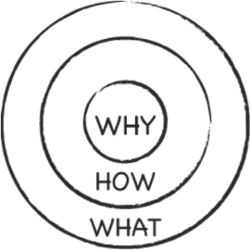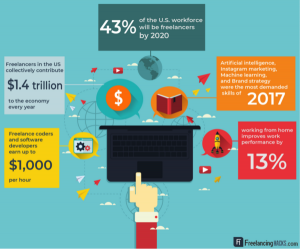— May 3, 2018

In September 2009, Simon Sinek took the stage at a TEDx event and delivered an 18-minute presentation that has now been viewed around 50 million times across a variety of different sites.
In it, Sinek offered a model for inspirational leadership that he explored in his best-selling “Start With Why”. He has gone on to be widely recognized as an expert in how leading organisations and people think, act and communicate.
I’m a fan. I believe what he believes.
If you’re unfamiliar with Sinek’s work, I’ve included a link to his presentation below. His concept of the Golden Circle – grounded in the biology of human decision making – helps us understand why some messages resonate while others fail. And it has tremendous relevance for successful B2B sales conversations…
Sinek’s key message is “people don’t buy what you do, they buy why you do it”. I’d like to expand his core idea as follows: I believe that our best customers don’t just buy what we do, they buy into why we have chosen to do it and are prepared to pay a premium for how we do it.
What, how and why
Sinek describes a situation that will be familiar to anyone who has ever tried to buy (or sell) a technology-based solution. Every single company and sales person on the planet knows what they do (or if they don’t, are unlikely to remain in business or in a job for any length of time).
Everyone has some degree of ability to describe the product or service they sell and the role they perform in the organisation, even if the resulting description is so complex and jargon-riddled as to be opaque to many listeners. But they can all articulate WHAT they do.
The WHAT is the list of tangible things that end up on a quotation, order form or purchase, usually (but not always) part of some recognisable category of stuff – for example, a CRM software subscription and associated services.
A smaller subset of companies and sales people are capable of describing HOW they do what they do. They might think (heaven help us) that they are describing a genuinely unique value proposition. Of course, it rarely is, but at least they are making some sort of attempt.
The HOW, when articulated, usually reflects an attempt to differentiate our solution from that being proposed by the customer’s other options that should (but all too often fails to) position our company and our solution in a way that is meaningful to the buying decision. There’s often plenty of room for improvement here.
But an even smaller minority of companies and sales people are capable of clearly articulating WHY they have chosen to do what they do – at either a corporate or a personal level. This is not to make a profit – any commercial organisation is likely to claim that.
The WHY is about our deeper purpose. It’s about why we founded the company, or why we chose to go into sales. It’s about our primary motivations. It’s about the trends, challenges and opportunities we have observed in the markets we serve, and our vision of what we can do about them.
It’s why we get up and go to work in the morning. It’s why we make conscious and principled choices about where we invest our energies. And it’s about why anyone else should care.
Outside in vs. Inside out
Sinek observes that most companies (and from my observations, most sales people and marketers) communicate from the outside in. They primarily define and describe themselves in terms of what they sell, and the categories in which they compete.
They may then make a rather weak attempt to define what sets them apart – usually based on doing something better, faster or cheaper than their competitors. These “differentiators” are usually at best transitory and frequently irrelevant to the customer.
But only a few companies and sales people can put all of this in the context of a “why” that proves to be both credible and motivational and is compellingly influential when driving buying behaviour.
The best companies – and the best communicators – think, act and communicate from the inside out. They attract customers who believe in their why – customers that have a shared sense of purpose.
Turning off bad customers
Interestingly, as well as attracting their most valuable customers, these messages can also serve to cause other apparently potential prospects to disqualify themselves from consideration. But such people and such organisations – if they don’t buy into our purpose and vision – are unlikely to ever become long-term profitable customers.
Surely, we want to qualify out organisations that only capable of buying at the “what” level? Even if we win their business now, they will continue to get distracted by the latest “what” bauble. They will continue to buy on specification, price and delivery. Our relationship will never develop deep roots.
The core of Apple
Sinek uses Apple as perhaps the best example of an organisation that has, over the years, communicated from the inside out with a simple and easy to define purpose that their best customers can instantly relate to, whether it’s a phone, tablet, laptop or watch.
Their customers self-identify with the Apple brand and its values. They value being part of the Apple ecosystem. They are prepared to pay a premium for something more than just superior tech specs. They are remarkably loyal.
And there are others who on principle would not buy Apple because they resent being “locked in” or because they buy solely on price and specification. That’s OK. Let them buy a Samsung. And maybe a Google phone the next time. Or a Sony. Or a Huawei.
These suppliers may be grateful for the business. But they are far less likely to build a lastingly profitable and loyal relationship with these customers. I realise that Apple might be seen as largely a consumer example. But the principles apply just as well to the world of complex B2B sales and to customer-vendor relationships.
Do you believe what I believe?
If you’ve bought into these concepts so far, there’s a strong chance that you believe what I believe. If you were to engage my services, it’s likely that you wouldn’t just be evaluating me on a list of defined deliverables and a price. It would be because you have bought into my “why”.
If you have, now might be a good time to conduct a quick audit. Take a look at the slide deck your sales people are using to position your organisation. Does it quickly segue into talking about your products (what)? Does it highlight your office locations (what)? Does it include a bunch of logo slides (what)? Does it attempt to establish differentiation using a list of things you do that you claim your competition doesn’t (what)? I think you can see where I’m heading with this…
And how about asking every member of your sales organisation to conversationally describe the purpose of your organisation in one or a few short sentences without recourse to your corporate mission statement (which, by the way, almost always read like they have been put together by a random buzz word generator).
Assuming the above exercise hasn’t resulted in the communication equivalent of a catastrophic train crash (and maybe even if it has), how about asking them to describe, in a single sentence, without recourse to jargon, exactly what it is that sets your organisation apart.
Emotional and rational engagement
I’m asking because that ability to articulate our why, how and what – in that order – has a profound impact on our ability to engage at both an emotional and rational level with our customers.
I’m asking because my observations tally with those of Simon Sinek – that the organisations and people who “start with why” are amongst today’s persistent top performers. And I’m asking because most organisations – and most sales people – have the capacity to do better. Much better.
Watch the video. Test whether the people you are relying on to carry your message to your customers are capable of clearly articulating your purpose and of passing the “why test”.
Remember: our best customers don’t just buy what we do, they buy into why we have chosen to do it and are prepared to pay a premium for how we do it.
Share your thoughts below. And please be sure to drop me a line or get in touch with your ideas.
Business & Finance Articles on Business 2 Community
(101)
Report Post







